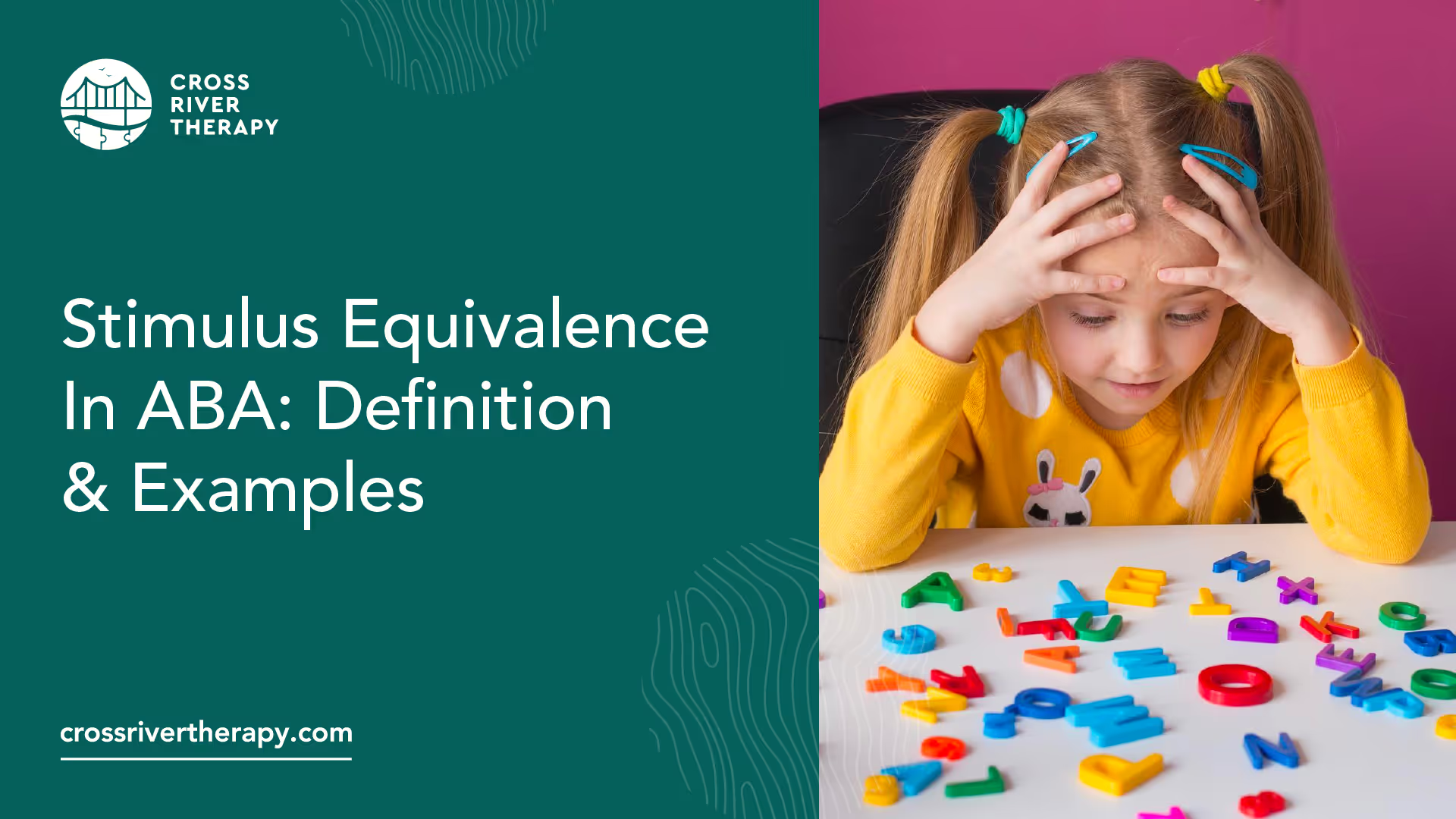Stimulus Equivalence In ABA: Definition & Examples
Stimulus equivalence shows how relationships can manifest among different types of stimuli in different situations.


What Is Stimulus Equivalence?
Known as a concept under Applied Behavior Analysis, stimulus equivalence shows how relationships can manifest among different types of stimuli in different situations.
Experts in the field that work in therapy sometimes find out programming for some types of instruction regarding characteristic targets, like a matching target. But newer, more unexpected responses usually spring forth without any assistance.
Clients in therapy can gain knowledge of the relationships between stimuli, develop classes of responses, then proceed to generalize info that was already trained before the situation.
Three properties exist that give descriptions to such relations, with stimulus equivalence being regarded as being attained after a client completes all relations within it.
Stimulus equivalence is described with reflexivity, symmetry, and transitivity being shown. To detail, if A equals B and B equals C, the client can take from that as A equaling C.
To detail reflexivity, the concept appears to a client by having the option to pick a stimulus that matches them. This would mean that the client understands that A equals A.
For symmetry, the concept appears in a reversal of a relation that's taught to a student. For instance, it's when a child is taught that A equals B that they derive the relation that isn't trained independently. Therefore, B equals A.
Transitivity is a reference to a client reducing untrained relationships on their own, such as the conclusion that A equals C and C equals after they're told that A equals B and B equals C.
Examples of stimulus equivalence
A client in therapy is being taught that A equals B and B equals C. Other relationships that aren't known by the client can derive from B equals B, C equals B, A equals C, and C equals A.
Recent News
Related articles

Working With Autistic Children: 10 Career Options
Want to work with autistic children? Here are 10 career options for you to consider.

What Is The Age Limit For ABA Therapy In Indiana?
Find out what the age limit is for receiving Applied Behavior Analysis (ABA) therapy in Indiana.

What Is The Age Limit For ABA Therapy In Arizona?
Find out what the age limit is for receiving Applied Behavior Analysis (ABA) therapy in Arizona.

Verbal Operants In ABA: Definition & Examples
In Applied Behavior Analysis, verbal operants are a type of verbal behavior.

Token Economy: Examples & Applications in ABA
A token economy is a procedure that was developed to help reduce maladaptive behaviors and increased desire behaviors by providing a tangible conditioned reinforcer.

Trigger Analysis In ABA: Definition & Examples
Trigger analysis is a segment of ABA therapy where children are taught by therapists to pinpoint the behaviors and emotions that happen before, during, and after an event that takes place.

Variable Ratio Schedule & Examples
A variable-ratio schedule is a random reinforcement where responses are reinforced following varied responses afterward.

Task Analysis In ABA Therapy: Examples & Strategies
Task analysis is a process of teaching that divides complicated activities into sections involving easier steps for students to more easily take.

Stimulus Equivalence In ABA: Definition & Examples
Stimulus equivalence shows how relationships can manifest among different types of stimuli in different situations.

Speech Therapy For Autism: ABA vs. Speech Therapy
ABA therapy can help individuals with speech impairments learn to better identify and utilize the language skills they already have.

Stimulus Control Transfer ABA: Definition & Examples
Stimulus control is defined as an expression used to detail circumstances where a behavior is triggered by the existence or absence of a stimulus.

Social Validity In ABA: Definition & Examples
Social validity is the acceptance of interventions concerning behavioral changes.

